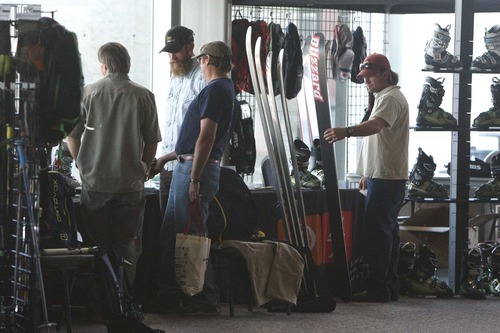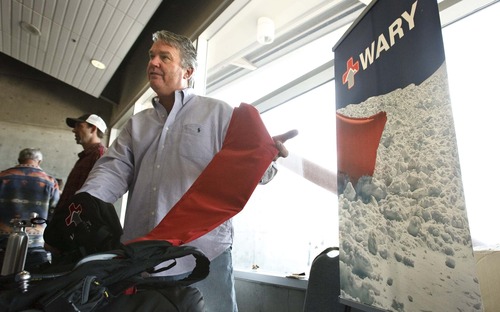This is an archived article that was published on sltrib.com in 2012, and information in the article may be outdated. It is provided only for personal research purposes and may not be reprinted.
On any winter day when conditions permit, as many as 5,000 skiers can be in the Wasatch Mountains backcountry — as many as at any of the four ski resorts in Salt Lake County.
Behind them is the Utah Avalanche Center, a joint effort between the U.S. Forest Service Utah Avalanche Center and the Friends of the Utah Avalanche Center. The center's forecasters analyze snow and weather conditions to determine avalanche conditions.
By 5 a.m., a detailed advisory is distributed to the public by phone message, website, local media — and, lately, social media. Conditions are updated whenever necessary in order to keep growing numbers of skiers flocking to the sport alive.
"They love it. It's pretty common to be in the backcountry and everybody's phones suddenly go 'ding ding,'" said Paul Diegel, executive director of the Friends of the Utah Avalanche Center.
On Saturday, close to 600 avalanche professionals and hard-core skiers met at the South Towne Exposition Center in Sandy to pass on the knowledge about avalanche forecasting and safety that has accumulated since the late 1940s, when the first modern forecasting techniques were developed in Little Cottonwood Canyon.
"As an older generation of avalanche researchers and forecasters started to [retire], I began to see that generation's knowledge would be lost if we didn't share that knowledge," said Craig Gordon, an avalanche-center forecaster who helped develop the first snow and avalanche workshop five years ago. "If you want to play guitar like Eric Clapton, you have to study Robert Johnson," the legendary blues guitarist who died in 1937.
Although only a fraction of Utahns ski in the backcountry, avalanche forecasting grows more necessary every year. Diegel and Bruce Tremper, who directs the Forest Service's avalanche center, said backcountry skiing is the only snow sport that is growing. Baby boomers who helped build the postwar ski industry are aging. And the number of new snowmobile registrations is declining, they said.
By contrast, "backcountry skiing is a rapidly growing sport," Tremper said.
Unfairly or not, the sport has a reputation of being dangerous. An average of four people — they may be skiers, snowboarders or snowmobilers — die in Wasatch Mountain avalanches each year. Last winter, five people died. Paradoxically, dry winter conditions increase the chances of avalanche.
Tremper thinks the danger is overstated. People are almost never killed in slides that aren't triggered by humans, and virtually all human-caused avalanches can be avoided with proper training.
"On average about 100 avalanches are unintentionally triggered each year [in the Wasatch Mountains]. About 20 people are caught in slides; 10 are seriously injured, and there are four deaths," he said. "But the vast majority of people do things right."
The sport has some cardinal rules: know weather and snow conditions before setting out, and carry a beacon, probe and snow shovel. Add in an airbag pack and survival chances are even greater. Unlike a beacon that guides people to someone buried under snow, an airbag pack is more of a self-rescue device. When inflated, the air bag tends to draw the wearer to the surface during a slide.
But at roughly $800, airbag packs aren't cheap.
"I realize it's expensive, but it will save you in an accident," said John Weinel, chief engineer at thewary.com, an online company that manufactures avalanche airbag systems.
pbeebe@sltrib.comTwitter: @sltribpaul





